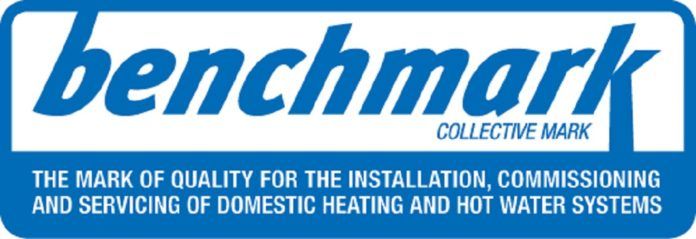
Chris Jessop, chair of the Benchmark steering group, looks at why the scheme remains important and the latest changes implemented to make it more relevant to modern day best practice, standards, and legislation.
Installers will no doubt be familiar with the Benchmark Scheme and be completing the Benchmark Checklist whenever an installation is carried out and commissioned.
Launched in 1999 and managed by the Heating & Hotwater Industry Council (HHIC), Benchmark aims to promote quality for the installation, commissioning and servicing of domestic heating and hot water systems.
To ensure that, after 20 years, it is still ‘fit for purpose’ and delivering for installers, manufacturers and customers alike, HHIC has worked in partnership with major boiler manufacturers, installers and representatives from across the supply chain, to revisit the scheme and update where needed, to take it into 2020 and beyond.
As a result, there are a few changes you will notice now appearing on recently printed Checklist forms in order to make it more relevant in terms of current regulations, and also to offer further improvements to the overall efficiency of the Benchmark system. Copies of the new Benchmark Checklists and other scheme documents will be found with the installation instructions supplied with products you buy and install.
You will find Benchmark Checklists available for:
- Gas boilers
- Mains pressure hot water storage systems and vented cylinders
- Gas fires
- Solar water heating products
- Heat pumps
- Micro CHP
SO WHY BOTHER TO FILL IT IN?
Completing the Benchmark Checklist is already a means of meeting the commissioning requirements within Part L of the Building Regulations, and embracing Benchmark is the most straightforward way to help make sure you comply, as the documentation is already supplied with the appliance.
It also offers protection to the installer. It demonstrates that your work has been carried out to best practice guidelines and increases your credibility with both manufacturers and customers.
Equally, if the product is correctly fitted and has a completed Benchmark checklist, if a problem then occurs, the onus is on the product manufacturer to undertake the repair. It is also worth noting that, without completing the Benchmark checklist, the warranty of the product is void.
Going forward, and to help make completing the checklist even easier, HHIC has been in discussions with Gas Safe Register and potential partners to investigate whether or not it is possible and feasible, to move the form online. This would mean that installers would be able to simply complete the checklist at the same time as registering the installation with Gas Safe, across different manufacturer brands.
The latest Benchmark consumer guidance available from the HHIC website under ‘resources, contains a set of best practice Standards of Work and Customer Service guidelines that installers should be working to when undertaking an installation. You can either download or share this guide with your customers.
In an industry that prides itself on quality, Benchmark provides additional reassurance to customers that their appliance will be installed, commissioned and serviced in accordance with the manufacturer’s instructions by competent persons, and that it meets the requirements of the appropriate Building Regulations. Where installation, commissioning and servicing of domestic heating and hot water products are concerned, Benchmark places responsibilities on both manufacturers and installers to make certain that the finished result meets these requirements. Completion of the correct forms helps clearly show consumers where the responsibility for each element of the job and ongoing performance of the product lies.
As the industry is continuously evolving, the Benchmark scheme is following suit. The first phase of this continuous improvement was to bring the form in line with current requirements. With this now complete, the next phase is to digitalise the form to provide an easy-to-access online version, which will make completing the form simpler and more intuitive. Not only will this make it more readily available to the installer and their customers, it will also improve visibility of the information. It is hoped that this will help further promote effective system servicing, maintenance and repair. The online system is currently in the design phase and planned for launch by the end of 2020, further communications will be published regarding the launch in due course.
